Last Updated on November 29, 2023
If you had to name the most original filmmaker of the last half-century, what’s the first name that comes to mind? David Cronenberg? Wes Anderson? Maybe Werner Herzog or the Coen brothers? While all of them are certainly worthy contenders, it’s hard to argue against the lasting merits of David Lynch, the truly unique cinematic surrealist who has been tormenting audiences with nightmarishly vexing material since his feature film debut Eraserhead in 1977. Indeed, few filmmakers have become name brands unto themselves in the way Lynch’s name evokes a particular type of psychological moviegoing experience. And while he’s worked in many different genres in his career with varying results, no one explores the nature of dreams and the human subconscious like Lynch has repeatedly done throughout his filmography. Moreover, as seen in his tour-de-force 1986 neo-noir mystery Blue Velvet, Lynch has an uncanny knack for digging beneath the idyllic facade of small-town America and exposing the seedy underbelly that often lies beneath.
It’s through that lens that we’ll fondly look back and discover what inspired the movie, how it was developed, what went into the casting, what memorable accidents and anecdotes occurred during production, how the film was shaped in the editing process, and what was left on the cutting room floor. In fact, we’ve got a lot more in store when we crack a Heineken…scratch that…a Pabst Blue Ribbon and find out What The F*** Happened to Blue Velvet!
Following his outstanding work on The Elephant Man in 1980, Lynch sought to develop his next film project. At the time, he was working on a script entitled Ronnie Rocket, a surreal Sci-Fi detective story. However, Lynch was forced to put the script on the back burner when he couldn’t secure funding for such a bizarre project. Lynch met with producer Richard Roth and showed him the script for Ronnie Rocket over coffee. While Roth enjoyed the script, it was too abstract and not commercial enough for Roth to want to produce. At that point, Roth asked Lynch if he had anything else he was working on, and Lynch told him:
“I had always wanted to sneak into a girl’s room to watch her into the night and that, maybe, at one point or another, I would see something that would be the clue to a murder mystery. Roth loved the idea and asked me to write a treatment. I went home and thought of the ear in the field.”
Now let’s backtrack a bit. Like fleeting fragments of a dream that linger in one’s mind, the idea for Blue Velvet gestated in Lynch’s brain since 1973, four years before Eraserhead was released. According to his autobiography Lynch on Lynch, three sources of inspiration helped the director come up with the story for Blue Velvet. The first was an indescribable “feeling” he experienced relating to the title Blue Velvet. The second source of inspiration was the image of a severed ear. In 1986, Lynch admitted to the New York Times that:
“I don’t know why it had to be an ear. Except it needed to be an opening of a part of the body, a hole into something else … The ear sits on the head and goes right into the mind so it felt perfect.”
Third and finally, Lynch also found a muse in Bobby Vinton’s classic 1951 version of the love ballad “Blue Velvet,” telling the Village Voice that he was drawn to “the mood that came with that song a mood, a time, and things that were of that time.”
It’s also worth noting that the scene in which Dorothy, played perfectly by Isabella Rossellini, was inspired by a haunting childhood experience Lynch has never been able to forget. According to an interview with Roger Ebert, Lynch confessed that he and his brother once saw a stark naked woman wandering aimlessly down a suburban street at night when they were kids. The image shook Lynch to the core and he was so traumatic he burst out in tears on the spot.
With Roth’s producorial blessing, Lynch went off to fine-tune the screenplay for Blue Velvet. According to his autobiography, Lynch wrote two additional versions of the script until he was satisfied with the dramatic weight of the story. Lynch claims that the primary setback to his earlier drafts was: “There was maybe all the unpleasantness in the film but nothing else. A lot was not there. And so it went away for a while.”
Once Lynch finally shaped the screenplay to his liking, he still had trouble finding interest from studios due to the shocking psychosexual violence. As such, the script was shopped around in the early 80s and passed on by virtually every minor and major studio that read it. Furthermore, after the monumental failure of Lynch’s adaptation of Dune in 1984, the director was all but radioactive in the eyes of producers. Luckily, Lynch found a match made in heaven when Dino De Laurentiis agreed to produce and distribute the film for the De Laurentiis Entertainment Group. According to The Making of Blue Velvet on the DVD Special Features, Lynch struck a deal with Di Laurentiis that would give him total artistic freedom and control over the final cut of Blue Velvet, allowing him to achieve his uncompromised vision. However, the proviso was that Lynch had to reduce his personal salary and make the movie for a budget of $6 million. Lynch also had an order to deliver a 2-hour movie. Such a limited budget would normally hamstring filmmakers, but Lynch actually found his situation to be a blessing in disguise. Get this, Blue Velvet was the least-expensive movie on the Di Laurentiis Entertainment Group’s schedule at the time. This means Lynch was left almost completely unfettered while making Blue Velvet and was rarely visited or checked up on by producers. As such, Lynch felt emboldened to take bold artistic chances on Blue Velvet, admitting in his autobiography that:
“After Dune I was down so far that anything was up! So it was just a euphoria. And when you work with that kind of feeling, you can take chances. You can experiment.”
While the production of Blue Velvet was officially announced in August 1984 (per BFI), pre-production and casting would last roughly one year before principal photography took place. As those who’ve seen the film know, Blue Velvet features iconic performances by Dennis Hopper, Isabella Rossellini, Kyle MacLachlan, and Laura Dern that, in retrospect, it’s almost impossible to imagine anyone else playing their roles. However, many different actors were up for the main characters. For instance, some reports claim Lynch specifically wrote the part of Dorothy Vallens for Blondie frontwoman Debbie Harry and that Harry turned it down because she was sick of being offered “weirdo” characters after her role in Videodrome. However, according to IndieWire, Helen Mirren was Lynch’s first choice to play Dorothy Vallens. Debra Winger was offered the role but turned it down due to the disturbing level of sex and violence. Lynch also had his sights on casting German actress Hanna Schygulla as Dorothy. Additional actresses considered for the part included Karen Allen, Rebecca DeMornay, Meryl Streep, Helen Hunt, Sissy Spacek, Jody Foster, Cybill Shepherd, Diane Keaton, and Anjelica Huston. Sigourney Weaver expressed interest in playing Dorothy but was distracted by other offers and ended up starring in Aliens the same year Blue Velvet came out.
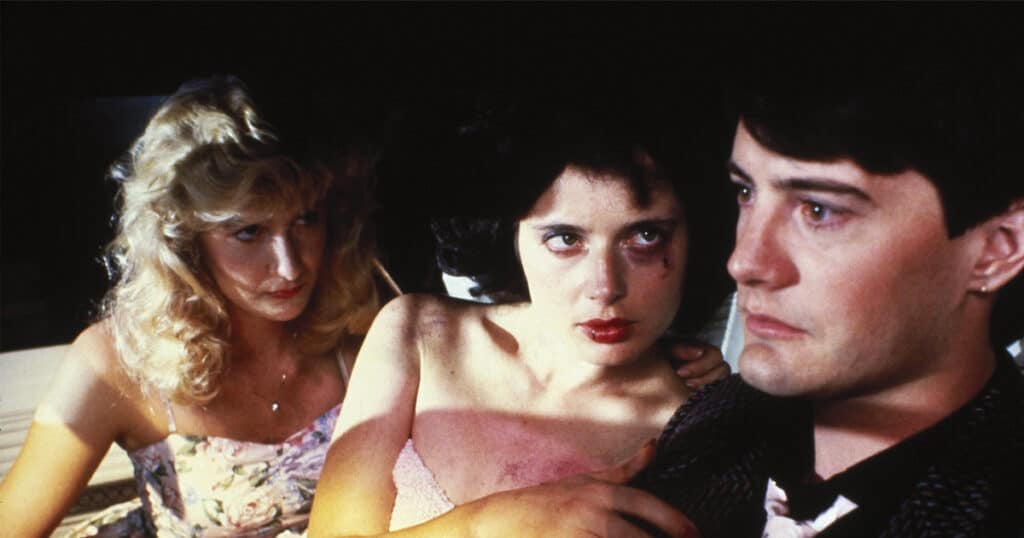
Eventually, Isabella Rossellini was cast as Dorothy after meeting Lynch in a New York restaurant. The famous daughter of Swedish actress Ingrid Bergman and Italian filmmaker Roberto Rossellini, Isabella had only appeared in four films before Blue Velvet and gained notoriety as a professional model starring in Lancome makeup ads. For those who don’t know, Lynch and Rossellini began dating while making Blue Velvet and remained engaged to marry from 1986 to 1990. Meanwhile, Dorothy Vallens was inspired by the life story of Judy Garland, who famously played Dorothy Gale in The Wizard of Oz.
As for Frank Booth, played indelibly by Dennis Hopper, the role was initially envisioned by Lynch with actor Steven Berkhoff in mind. Lynch’s long-time future collaborator Harry Dean Stanton was also offered the part. But, like Berkhoff, Dean Stanton declined due to the intense violence in the script. Strangely enough, actor Michael Ironside claims Lynch wrote the part for him to play. Meanwhile, Robert Loggia lobbied to play Frank Booth and Willem Dafoe was in the running as well. Remember, Dafoe would go on to portray the equally repulsive Bobby Peru in David Lynch’s riveting road movie Wild at Heart and Loggia would show up as Mr. Eddy in Lynch’s Lost Highway. Tom Noonan also auditioned for Frank Booth before Hopper was cast. According to the making-of documentary, Hopper enthusiastically phoned Lynch and declared “I’ve got to play Frank! I am Frank!”
As for the role of Jeffrey Beaumont, Val Kilmer, who was almost cast in Dune, was the first actor offered the part. At the time, Kilmer referred to the script as “pornography” and declined but later admitted that he would have gladly starred in the movie that Lynch ultimately made. Singer Chris Isaak was also up for the part of Jeffrey and would go on to star in Lynch’s landmark TV series Twin Peaks. In the end, one of the risks Lynch took was casting his old pal Kyle MacLachlan, who could have been deemed as damaged goods after starring in Dune. However, as Lynch told GQ Magazine:
“Kyle plays innocents who are interested in the mysteries of life. He’s the person you trust enough to go into a strange world with.”
Before 18-year-old Laura Dern was cast as Sandy Williams in the film, teen idol Molly Ringwald was Lynch’s first choice. Ringwald’s mother was so appalled after reading the script that she instantly declined on behalf of her daughter. Interestingly enough, Dern was offered the part of Sandy on her first day of college. Odder yet, Lynch had never seen any of Dern’s movies before casting her in Blue Velvet. By contrast, Isabella Rossellini did see Dern play a blind girl in the 1985 movie Mask. Rossellini was so convinced by Dern’s stellar performance that she wondered why Lynch would cast a blind girl in Blue Velvet when Sandy was not blind in the script. Of course, just like MacLachlan, Dern would go on to star in multiple Lynch movies after Blue Velvet.
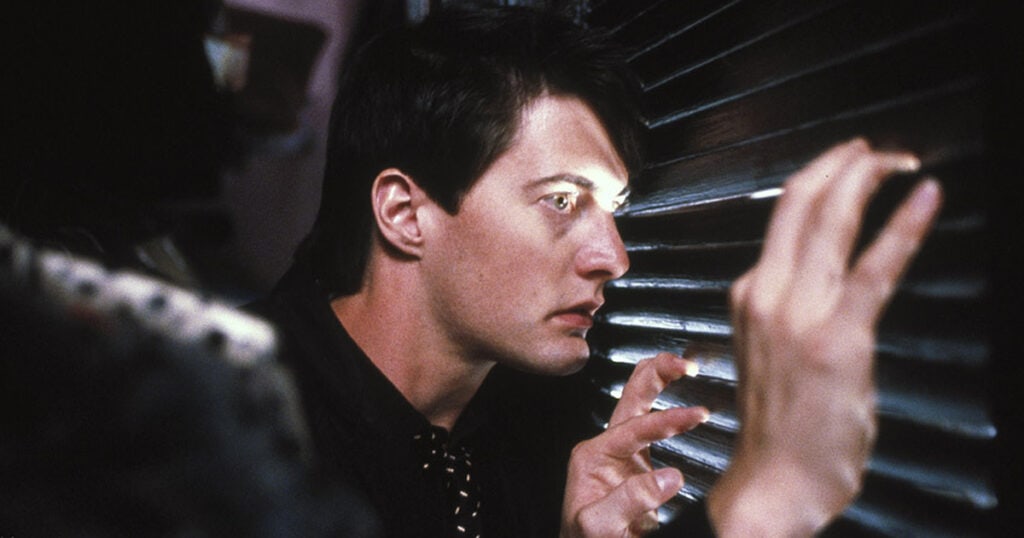
Following one year of pre-production and casting, principal photography for Blue Velvet officially commenced on August 19, 1985, and lasted until December 20th of the same year. Although the film is set in the real town of Lumberton, North Carolina, most of the film was shot at the EUE/Screen Gems Studio in Wilmington, North Carolina, including the exteriors seen in Lumberton in the movie.
The Carolina Apartments where Dorothy resides in the film were shot at a real apartment complex located on 5th and Market Street in downtown Wilmington. Those native to the area will recognize the famed Kenan Fountain appearing prominently in several shots in the film.
One of the first things that happens in the movie is Jeffrey finding a severed human ear on the lawn of a vacant lot in his neighborhood. The ear is later revealed to belong to Don, Dorothy’s husband. But instead of modeling the ear on Dick Green, the actor who plays Don, the prosthetic ear used for the scene was originally molded after makeup supervisor Jeff Goodwin’s ear. However, when Lynch saw the mold, he felt it was too small and looked like a child’s ear. As a result, a second prosthetic was patterned after producer Frank C. Caruso’s ear. Even so, to this day, one of the severed ear props remains in the possession of Goodwin. Two other props were made, one of which is currently displayed at the Movie Madness museum and rental shop in Portland, Oregon.
The most infamous scene in Blue Velvet comes when Jeffrey sneaks into Dorothy’s apartment at night and becomes involved in a voyeuristic, psychosexual role-playing game. Dorothy attempts to seduce and rape Jeffrey at knifepoint before Frank storms in and completely turns the tables on Dorothy, physically and verbally abusing her while huffing narcotic fumes. First of all, the sex scene between Dorothy and Jeffrey was longer in the original screenplay. As initially envisioned, Dorothy suspects Jeffrey to be her husband, Don, and begins crying when saying Jeffrey’s name out loud. Meanwhile, Jeffrey was originally meant to spin the little propeller on Dorothty’s son’s hat as she undresses him right before Frank shows up.
According to Rossellini, she was completely naked under her robe while filming the scene with Frank, something that Hopper was not aware of until cameras began rolling. Once Rossellini spread her legs to allow Hopper to kneel between them, Hopper realized what was happening. What’s even crazier is that the scene was the first time Hopper and Rossellini worked together on the film.
The notorious apartment scene was also difficult to shoot due to the locals gathering nearby. According to Rossellini in her autobiography Some of Me, citizens in Wilmington showed up at the apartment complex with blankets and picnic baskets to watch the harrowing sequence filmed in real-time. Despite the distraction, Lynch continued to shoot the scene as planned. When the sequence was completed, the townsfolk wandered away in a state of bewilderment. Afterward, the local police informed Lynch that he was no longer able to shoot in public locations in Wilmington. The rape scene was that disturbing!
Of course, what’s disturbing to the general public is downright amusing to Lynch. According to Rossellini, filming the rape scene was so surreal and bizarre that Lynch could not stop laughing hysterically off-screen. At the time, Rossellini was mystified as to why Lynch would laugh so hard at such unsettling material. But she later admitted that whenever she watches the scene nowadays, she cannot stop herself from bursting into maniacal laughter.
Speaking of Frank and his moody narcotic escapades, the character was originally written to inhale helium throughout the film. It was Hooper who suggested changing the helium to amal nitrate, knowing that the latter substance was often used recreationally as a sexual stimulant. Years later upon reflection, Hopper imagined how insane it would have been to play a psychopathic high-pitched helium addict but still stood by his choice. Meanwhile, Lynch felt changing the helium to amal nitrate was wise, as he feared audiences would find a helium-voiced madman ridiculous and laugh for all the wrong reasons.
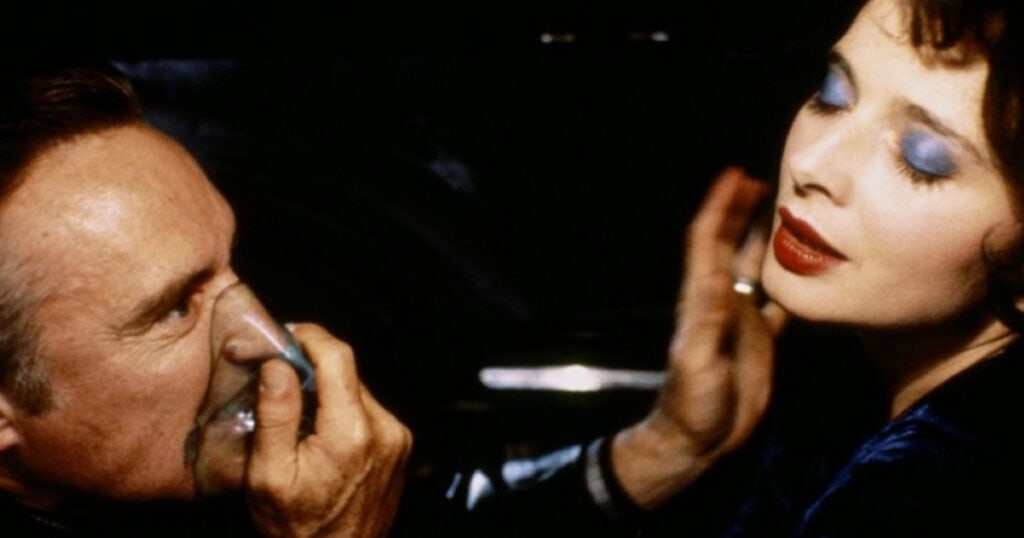
While on the subject of Frank, it’s worth noting that he drops every single F-bomb in the movie except for one. Frank says the F-word 55 times and uses it in every sentence. Meanwhile, Ben utters it once, but only after being told to do so by Frank. What’s interesting about this factoid is that, according to Hopper, Lynch never said the word “F*ck” one time while making the movie. Instead, Lynch would point to the script when needed and refer to the profanity as “that word.” Hopper found this quite amusing, stating, “He can write it, but he won’t say it. He’s a peculiar man.” While Lynch has slightly pushed back on this assessment, he stated that he didn’t want to curse on set and add to the hyper-charged atmosphere they already established.
During the infamous first rape scene, Frank strikes Dorothy across the face as Jeffrey watches from inside the closet. The shot originally depicted Frank’s hand striking Dorothy’s face. To satisfy the MPAA and its mandate to reduce the graphic depiction of violence against women, Lynch had to re-edit the scene to make it appear as if Frank’s hand hits Dorothy’s face off-screen. However, in Lynch’s personal opinion, he felt the result did more harm than good and only made the scene more alarming.
Another notable sequence in the film takes place after Frank catches Jeffrey leaving Dorothy’s apartment, captures him, and takes him to Ben’s brothel. Ben, played beautifully by Dean Stockwell, croons a drug-addled version of Roy Orbison’s song “In Dreams.” According to reports, Orbison initially refused Lynch’s request to use the song. However, through a legal loophole, Lynch found a way to use the song in the movie anyway. Orbison had no clue In Dreams was included until he saw the movie himself years later in a California theater. Orbison was not only okay with how In Dreams was utilized in Blue Velvet, but he later filmed a music video for the song that was produced by Lynch and incorporated footage from the film.
As for Ben, he lip-syncs In Dreams while holding a work light that illuminates his face. According to Lynch, Ben was originally meant to hold a microphone in the scene. However, when he saw Stockwell fooling around with a work light on set in between takes, he loved the visual appearance so much that he put it in the film.
Something similar happened regarding the use of Bobby Vinton’s iconic title track, Blue Velvet. Producers did not want to pay such a high price to attain the rights to use the song. As such, composer Angelo Badalamenti was hired to record an exact cover of the sumptuous love ballad. Once Badalamenti completed the task, Vinton was invited to re-record the vocals to the song over Badalamenti’s instrumental. However, by then, Vinton’s vocal range changed to two and a half keys lower than the original version of Blue Velvet. Feeling the result didn’t sound right, Lynch finally convinced the producers to pay for Vinton’s original recording. Just like Orbison’s version of In Dreams, it’s nearly impossible to imagine the movie without the use of Vinton’s Blue Velvet. By the way, Badalamenti makes a brief appearance in the film as the pianist at the Slow Club where Dorothy performs.
While on the subject of the soundtrack, Badalamenti was asked to create an orchestral score for Blue Velvet inspired by the Russian composer Dmitri Shostakovich. Reportedly, while filming the movie, Lynch placed large speakers around the set and in the streets of North Carolina and constantly played Shostakovich’s music to set the tone and tenor of the movie’s mood and atmosphere. More specifically, Lynch wanted Badalamenti to reflect the sounds of Shostakovich’s 15th Symphony, a piece of music Lynch had been listening to on repeat as he wrote the screenplay. The iconic pop songs juxtaposed with the orchestral score create an unnerving counterpoint that has led to many considering Blue Velvet’s soundtrack to be among the very best on record. As such, it’s no surprise that after working with Lynch for the first time on Blue Velvet, Badalamenti would go on to score all of the director’s films until Inland Empire in 2006.
It’s also worth mentioning that Lynch initially intended to use the track “Song to the Siren” by the band This Mortal Coil for the scene in which Jeffrey and Sandy slow dance together. While the production was unable to afford the rights to the song, Lynch loved the song so much that he used it a decade later in his aforementioned movie Lost Highway.
Now, immediately after leaving Ben’s brothel, Frank and his minions take Jeffrey on a high-speed joyride at night. The sequence utilized old-school, low-fi filmmaking techniques. Get this, to make it look as if the car is blazing through the night, a stationary car was simply rocked back and forth by stagehands located off-screen. Meanwhile, additional crew members ran past the vehicle with lights in their hands to make it appear as if streaks of headlights were passing by.
As alluded to before, the scene in which Dorothy appears naked on Jeffrey’s front lawn was inspired by a haunting experience Lynch had as a child. In her autobiography, Rossellini spoke at length about how difficult the scene was for her to film, stating:
“I wish I’d found some other approach for the scene in ‘Blue Velvet’; I did not like being totally exposed. I kept worrying about what my family would think when the film came out, and I searched and searched for other solutions until the last moment – also because people were gathering around the set to watch the making of the film. I begged the assistant director to warn them it was going to be a tough scene, that I was going to be totally naked, but they stayed, anyway. I went out and talked to them myself, but they were already in the mood of an audience and just stared at me without reacting to my plea and warning.”
Following her fearlessly daring performance, Rossellini was released from her contract with ICM Partners – the agency that represented her – once they saw the film in a test screening. According to Salon, Rossellini also received phone calls from the nuns at the school she attended as a child in Rome, who expressed concern for her performance and told her they were praying for her wellbeing.
Speaking of test screenings, MacLachlan revealed on Alec Baldwin’s radio show in 2018 that Blue Velvet had a notoriously awful test screening. Everyone involved with the movie was worried to death after the test audience filled out some of the worst response cards the studio had ever seen. However, the famed New York film critic Pauline Kael gave the movie a much-needed public boost. According to MacLachlan:
“(Kael) explained it to people in a way, or pointed them in the right direction, or helped them to get a sense of what the world that they were seeing was about, and that started the slow movement of acceptance of the movie.”
In the movie’s climactic sequence, Detective Tom Gordon, aka The Yellow Man, is fatally shot in the head by Frank. According to actor Fred Pickler, who plays Gordon, he immediately went to a McDonald’s drive-thru after filming the scene. Pickler was still covered in the gory fake blood and sticky brain matter, which completely mortified the young female server. Pickler had to explain that he was filming a movie nearby out of fear that the McDonald’s employee would faint on the spot.
In the final scene of the film, Jeffrey spots a robin in a tree, which ties together the visual motif relating to Sandy’s dream. During an interview with Jonathan Ross, Lynch cheekily claimed the robin used was a real bird. When Ross pushed back and said it looked artificial, Lynch gave a wry smile and stated, “Well, it’s playing a role.” Later, while it was revealed the robin was some sort of mechanical device, the props department found and used a real dead robin on the street.
Now, what many fans don’t know about Blue Velvet is that Lynch initially turned in a 4-hour cut of the movie. However, he was legally obligated to deliver a 2-hour feature for The De Laurentiis Entertainment Group. As such, Lynch was forced to cut out several subplots and side characters, many of which held clearer answers regarding the overall plot. For example, the original script explained why Frank kidnapped Dorothy’s husband Don, and cut off his ear in the first place. The script revealed that Don was a drug trafficker who wanted to walk the straight and narrow and become a police informant. Lynch’s original 4-hour cut depicted Frank exacting revenge on Don by kidnapping him and his son, cutting his ear off, and attacking his wife. However, in the interest of time, these scenes were deleted from the final 2-hour version. In fact, the deleted footage from the film was thought to be lost for more than two decades. However, on the 25th Anniversary Blu-ray release of the movie in 2011, 50 minutes worth of deleted scenes were added as bonus material.
Another deleted subplot in Blue Velvet involved Jeffrey attending college before going home to deal with his father’s stroke. The sequence entailed Jeffrey interacting with his college girlfriend Louise Wertham, played by Megan Mullaly, a character that is completely absent from the final cut. While attending a college party, Jeffrey also witnesses and prevents the impending date rape of a female student.
Other notable deletions include a woman lighting her nipples on fire at Ben’s brothel; Dorothy bringing Jeffrey to the roof of her apartment where they have a conversation and make love; Jeffrey attending dinner at Sandy’s house; and several scenes inside Jeffrey’s house where he interacts with his mother and aunt. Almost all of these deleted scenes are detailed in Lynch’s original screenplay and can be seen on the 2011 Blu-ray release. However, it’s worth noting that roughly one hour of missing footage is still nowhere to be found.
Suffice it to say, despite being a modest box-office success when the film was released theatrically in September 1986, Blue Velvet has gone on to become one of the most acclaimed movies ever made and a bona fide cult classic for the ages. The danger is undeniable, the characters are unforgettable, and the veil of small-town Americana has never been lifted to expose the corrupt and corrosive underworld lying beneath the surface in such a memorable manner.
While a whole other video can be done on the movie’s interpretive symbolism, that’s more or less What The F*** Happened to Blue Velvet. In his fourth feature film, Lynch channeled three crucial sources of inspiration to bring Blue Velvet to life. After a year-long casting and pre-production period, the 4-month film shoot largely went off without a hitch despite the sinister sadomasochistic story and crowds of onlookers flooding the set at times. With nowhere to go but up following his disappointing experience making Dune, Lynch found himself in a creative sweet spot that allowed him to realize his uncompromised artistic vision. As a result, Blue Velvet remains a timeless masterpiece!


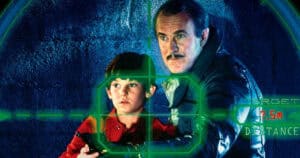

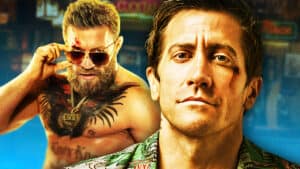
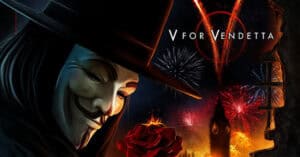
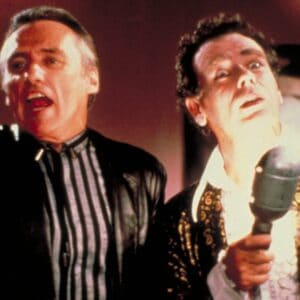
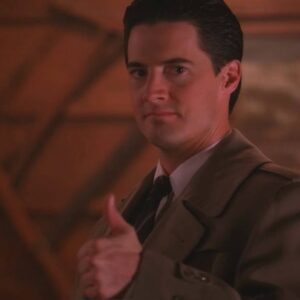

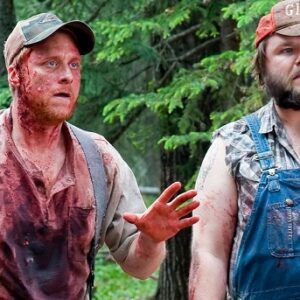
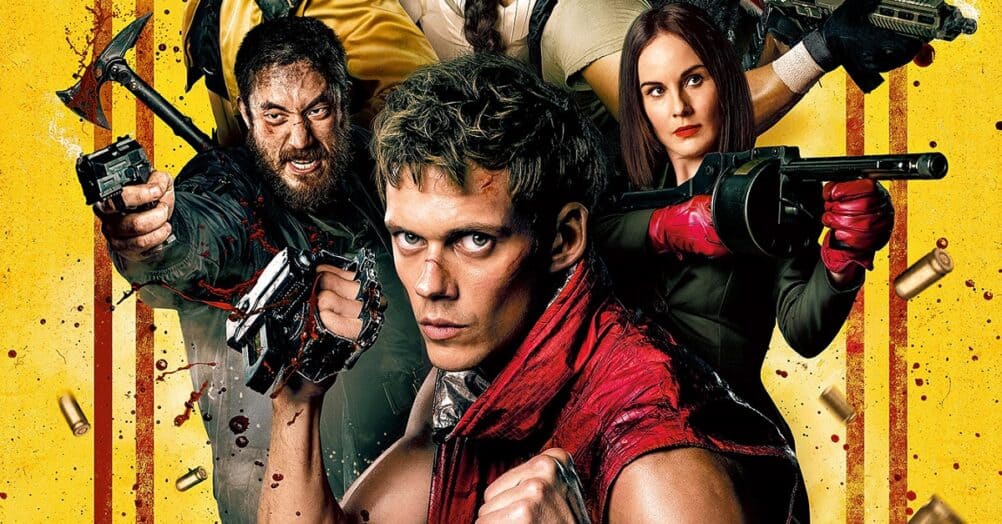
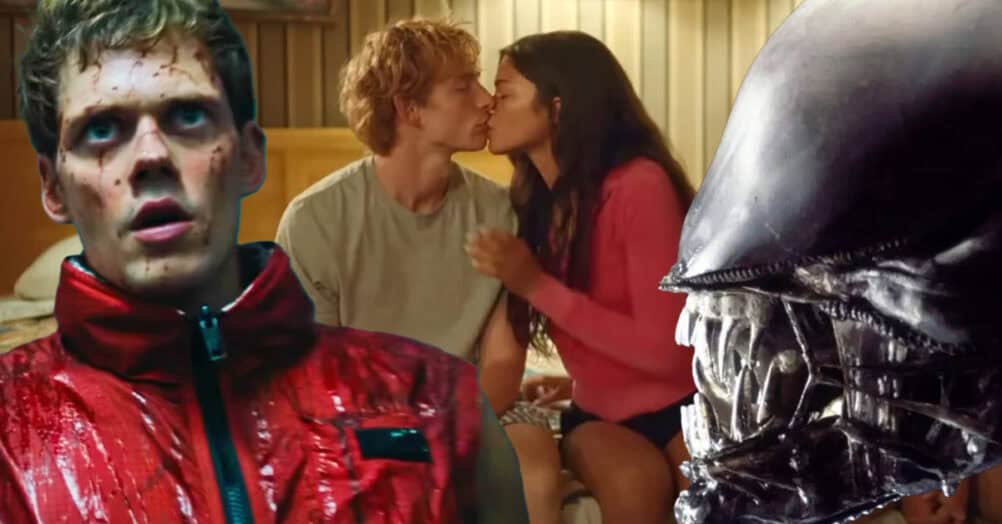
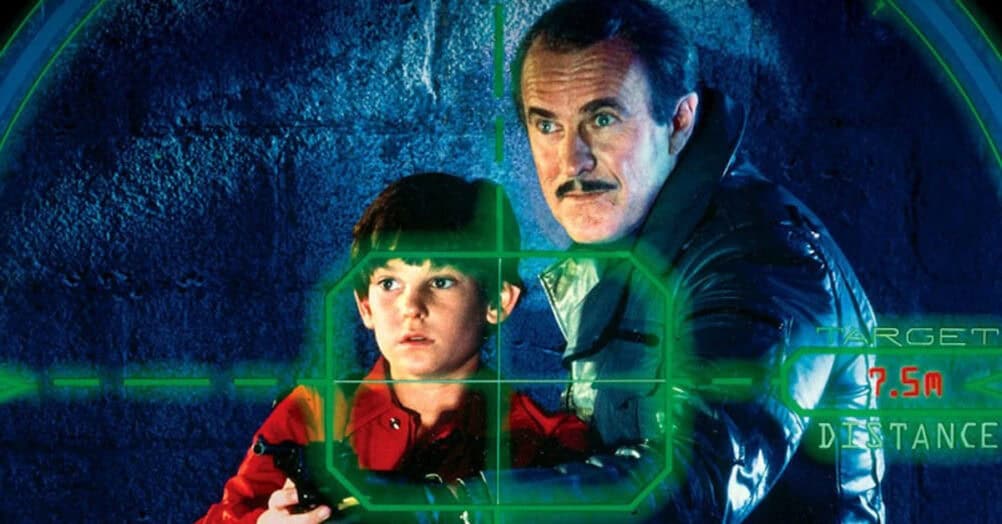
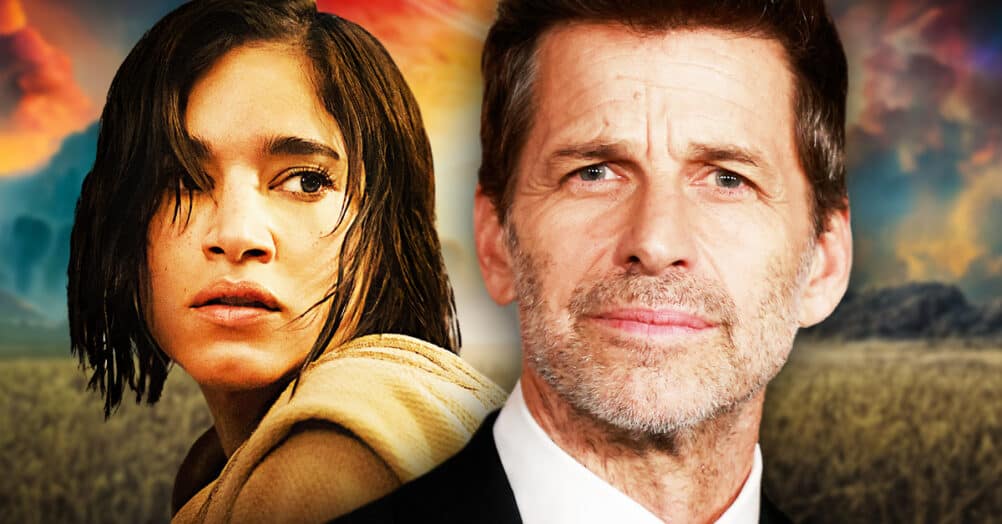
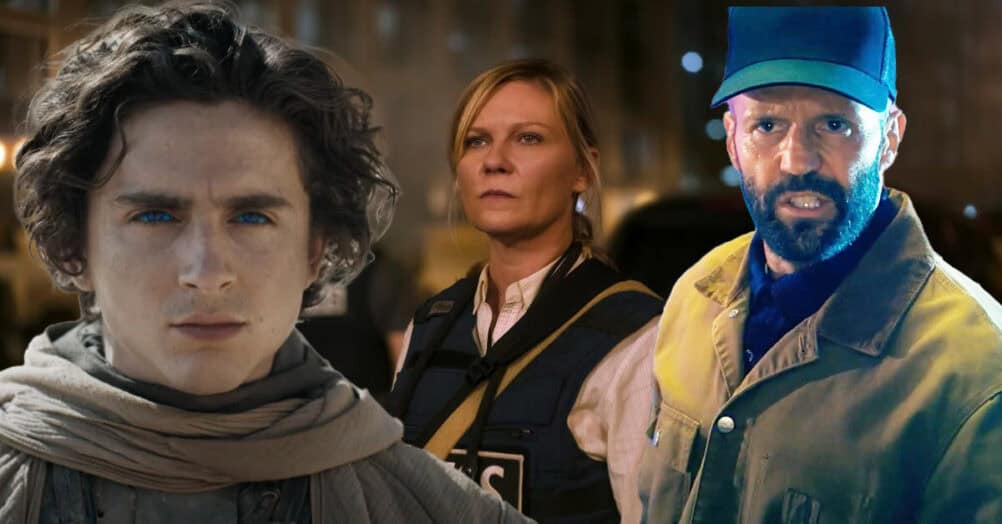
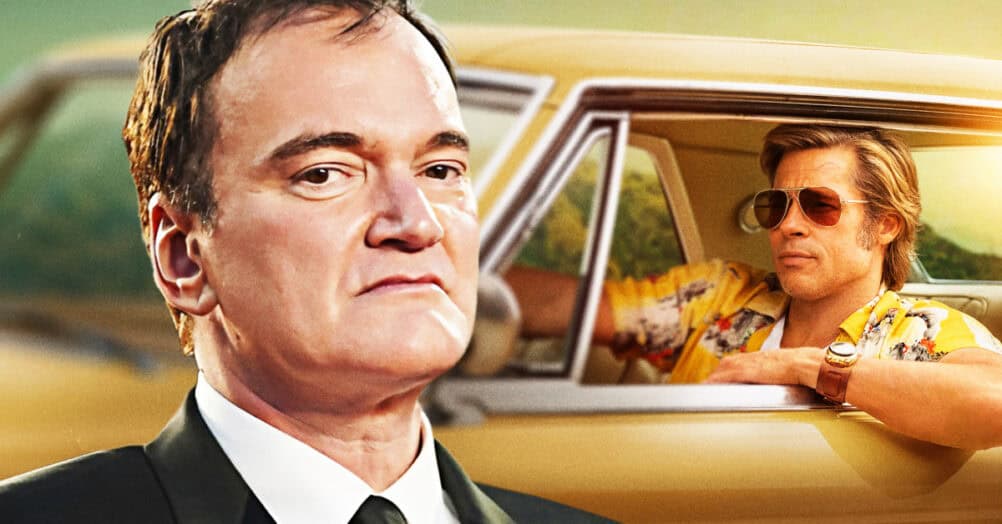

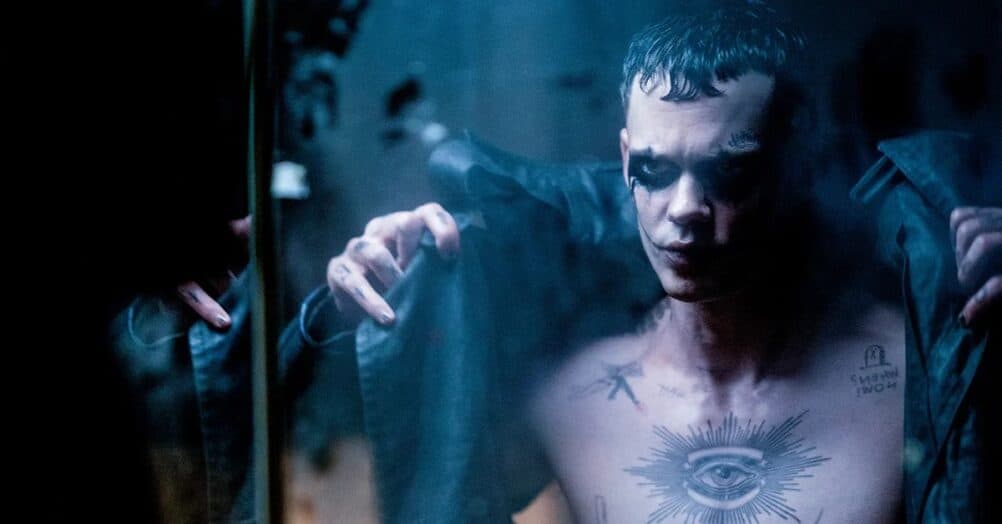
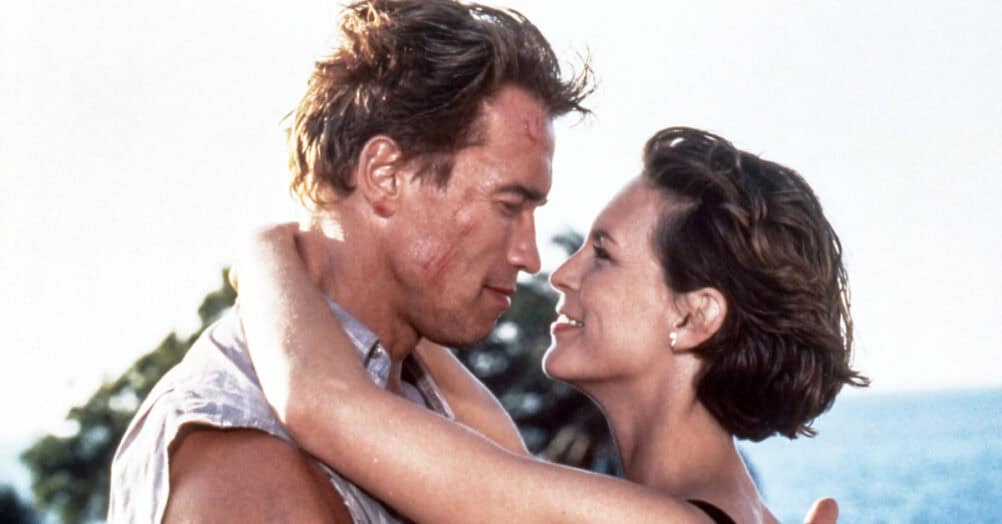
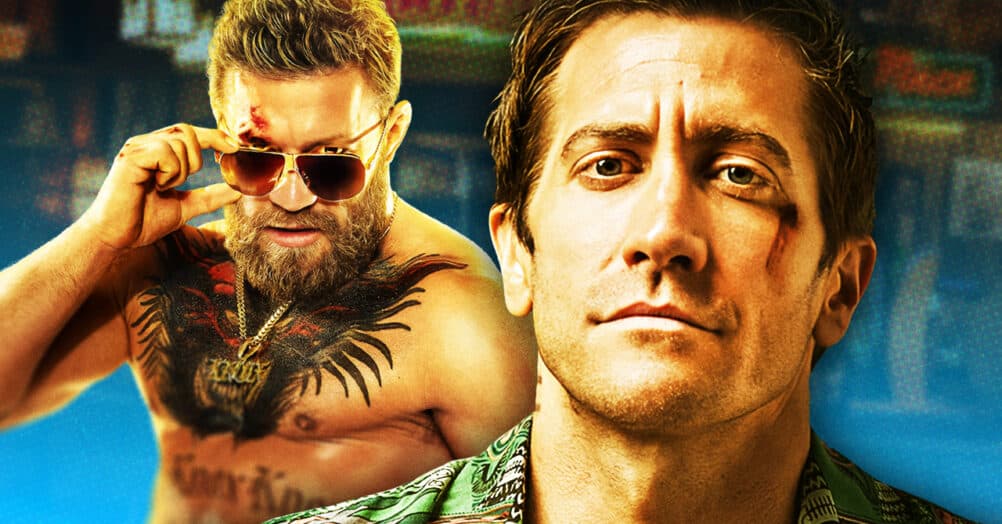
Follow the JOBLO MOVIE NETWORK
Follow us on YOUTUBE
Follow ARROW IN THE HEAD
Follow AITH on YOUTUBE